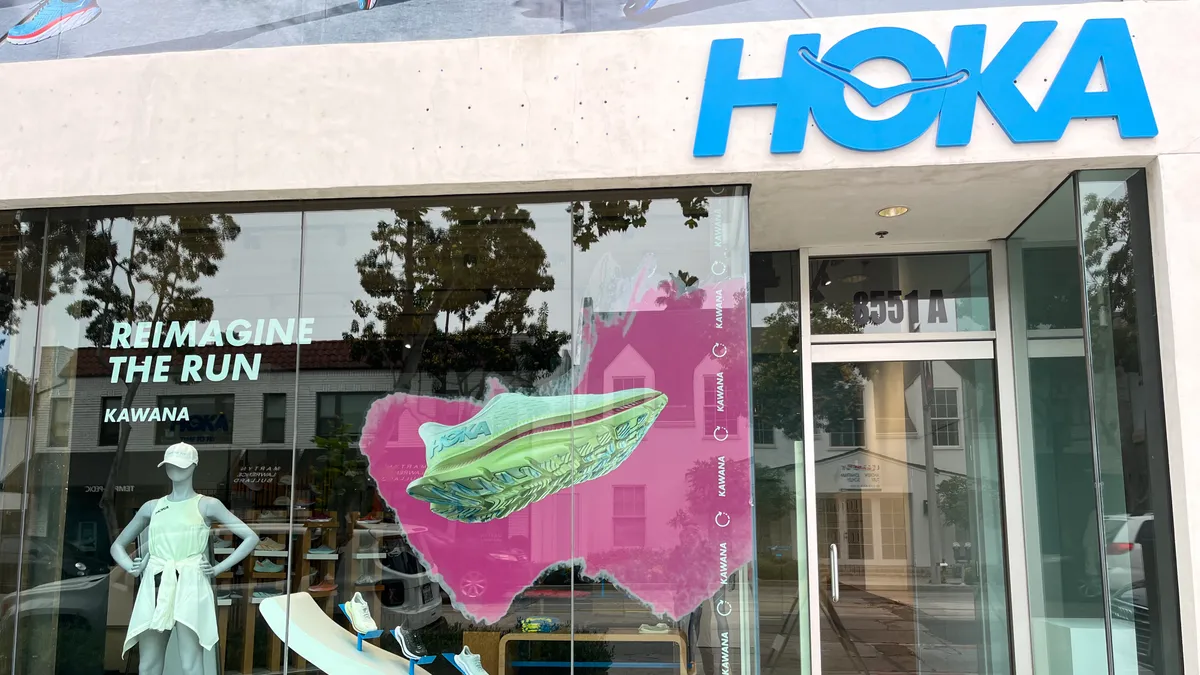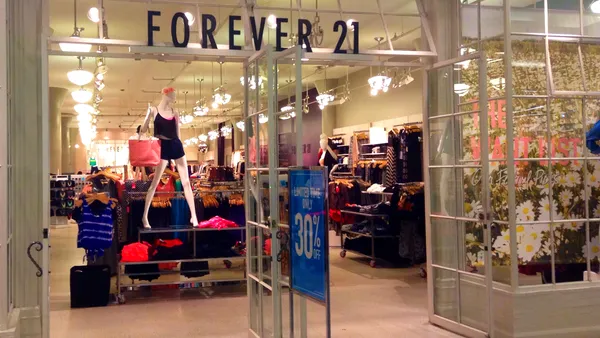Dive Brief:
- Deckers’ net sales rose 22% to $825 million from $676 million last year for the company’s first quarter ended June 30, the footwear, apparel and accessories company said Thursday. Net income also rose in Q1 to $116 million, an 82% year-over-year increase from about $64 million a year ago.
- Hoka was the company’s main growth driver. The brand saw 30% year-over-year net sales growth from $420.5 million to $545.2 million in Q1. Ugg also saw net sales growth of 14% to $223 million from $195.5 million a year ago.
- Direct-to-consumer net sales rose 24% to $311 million, up from $250 million. The company’s results, according to outgoing CEO Dave Powers, “give us confidence that we can deliver the increased profitability reflected in our updated outlook.” Incoming CEO Stefano Caroti is set to take over as CEO on Aug. 1.
Dive Insight:
Hoka continued to boost Deckers in Q1 with strong growth.
Deckers “once again delivered a strong quarter, beating sales and EPS expectations by wide margins, with both core brands showing continued momentum,” Wedbush analysts Tom Nikic and Matt Quigley said in a note.
Wedbush’s analysts said that Hoka’s DTC performance reaccelerated, sustained by high brand momentum, while Ugg delivered solid growth and benefited from less year-over-year discounting and closeout selling.
TD Cowen analysts led by John Kernan echoed that sentiment in their own note, saying “we remain impressed by the consistency of innovation, segmentation, and accretive DTC growth which should continue to support a robust growth profile into future years.”
The company slightly raised a few full-year guidance metrics and maintains net sales will rise 10% to $4.7 billion. Deckers’ brand portfolio also includes Teva, Sanuk, Koolaburra and Ahnu. Powers said Thursday the company has reached an agreement to divest Sanuk in a deal expected to close next month.
Powers, who said Deckers wants to grow DTC to about 50% of its total business (it was nearly 38% of sales in Q1), elaborated on some other growth drivers for the company’s two top brands during a Thursday call with analysts. Hoka’s product assortment, including new launches, saw strong demand across the brand’s global marketplace.
Additionally, “emerging franchises like the Mach, Transport and Kawana drove outsized gains and new styles like the Skyward X, Cielo X1 and Skyflow brought incremental volume and attention to the brand through segmentation and greater innovation,” Powers said.
Powers said Hoka’s Mach 6 running shoes have seen strong sell-through across the global marketplace. Mach was a top five revenue style for Hoka for Q1. Hoka also saw DTC revenue rise 33% versus last year, while wholesale revenue rose 28% year over year.
At Ugg, Powers said a more focused assortment is driving the majority of consumer demand. That dynamic contributed to lower promotion compared to prior first quarters. Powers said the DTC business is typically more influenced by end-of-season discounting on seasonal colors during Q1.
Hoka and Ugg are taking different strategies on physical store openings. For Ugg, Powers said they’re taking a city flagship approach with a store on Fifth Avenue in New York City, an upcoming opening in London and an ongoing search for flagship locations in China and Asia more broadly. In contrast, at Hoka “we see the demand, we see the opportunity. And we'll be a little bit more strategic and a little bit more aggressive. But we're not looking to roll out to 200 doors across the fleet,” Powers said. “We're going to manage this tightly along with the marketplace and make sure that we have great experiences for our consumers.”














